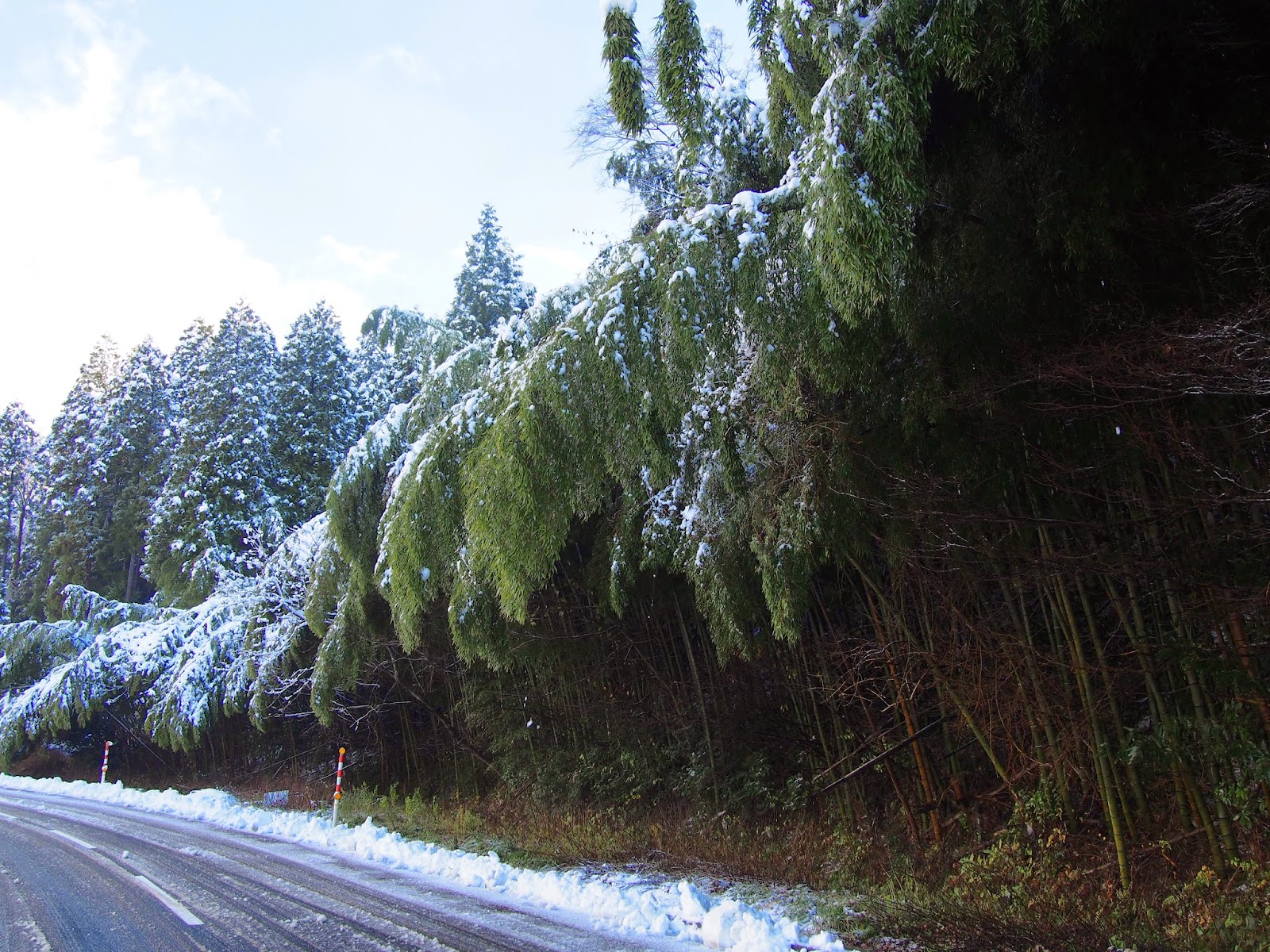Green, Orange, Red and Yellow
Last weekend I took a trip to Kyoto, the old capitol of Japan, which is famous throughout the country for its beauty in the Fall season. Since this is my favorite season and Kyoto's Autumn is so highly recommended I decided it was a must-see for me this year.
 |
| Noto Railways- anime train |
As soon as the clock struck four on Friday, I grabbed my things and got in my car to drive straight to the train station forty-five minutes away. I had packed my backpack the previous night in preparation so that I wouldn't miss the opportunity to catch the 5:20 train that evening. After riding the train for about 4 1/2 hours I arrived at Kyoto station and took a dark, rainy walk to my hostel. I was in Kyoto for a weekend once before, three years ago during my internship; but there is so much to do in Kyoto that I did not even repeat anything this weekend that I had done before. And I still haven't done anywhere close to everything there is to do here!
I began my day in the Arashiyama area. As I alighted the city bus I was immediately greeted by a fantastic maple tree with bright orange leaves! Beyond the tree, the Oi river, and the Togetsu-kyo Bridge rose up the formidable Arashiyama mountains, splashed with colors. Just two minutes into my sight-seeing it was clear that Kyoto in Fall was a great choice.
 |
| A charming canal off of the river |
My first stop Saturday morning was Iwatayama Monkey Park. I took the 20 minute stroll up the mountain surrounded by woods chock full of beautiful colored maple trees.
The top of the mountain is home to a whole tribe of Macaques, the only species of monkey that naturally resides in Japan. At the mountaintop compound they provide food, shelter and maintain a playground for the monkeys. You actually walk through the park where the monkeys are, close enough to touch. The macaques are quite used to being around humans and don't take any notice of you. And they certainly do not oblige you with still poses if you want pictures.
At the top of the mountain at the monkey compound there was a beautiful view looking out over the city of Kyoto.
After leaving the monkey park I headed back down to the Arashiyama area to visit a few temples. Along the way I noticed a sign posted about a maple tree garden that was open for special Fall-viewing pleasure so I headed right in. It was gorgeous.
 |
| This guy. |
After touring the maple garden, I headed to Tenryuji, a Buddhist temple which is also a world cultural heritage site. It was established in 1339 by a man called Ashikaga Takaui in memory of Emperor Go-Daigo. It is historically significant as the first Zen temple in Japan. Also, the landscape garden behind the main hall, called Sogenchi Garden, is in the same form as when it was made in the fourteenth century. In 1994 the United Nations designated this temple as World Cultural Heritage Site.
The temple itself is obviously quite popular due to its status. But I find the crowds of tourists detracting from the experience so I quickly made my way to the garden in back which was much quieter.
After exiting Tenryuji, I wandered through the famous Bamboo Path.
Next I went to Jojakkoji Temple...
After that I trekked to Gioji Temple, another one off the beaten path, but a real treasure for fall foliage.
After night fell on Saturday I went to Kodaiji Temple to see their annual Fall light up. It is quite popular and was filled with hoards of other visitors. But it was very pretty to walk through and see all the maple leaves lit brightly against the dark sky. The crowning spot within the temple grounds was a pond surrounded by trees. It was beautiful since the lit up trees were brightly reflected in the water- creating a mirror landscape of bright trees against a black background. The next beautiful part was a walk through a bamboo grove. They had even placed lit up parasols among the bases of the trees for the event.
--
I woke up early again on Sunday, gathered my things and headed to Fushimi Inari Taisha, one of the most famous places in Japan. Inari is a suburb of Kyoto based around Mt. Inari. Mt. Inari is covered in shrines with the grand shrine, taisha, being the main attraction. It is special and unusual because the path up to the top of Mt. Inari is lined by hundreds of red torii. It is called 千本とりい, which means A Thousand Gates. Unfortunately I could not go all the way up to the top because I did not have enough time, but that just means I will have to go back!










After some shopping I had to make my way back to the train station around two in the afternoon for my return trip. Three train rides later I arrived back in chilly Ishikawa where I woke up the next day to the start of winter. All this week the high every day has been around 6 degrees C (42 Fahreneit) with constant rain and ice pellets. Going to Kyoto was a brilliant way to spend the last weekend of the Fall season, enjoying the gorgeous green, orange, red and yellow leaves as they fluttered down from the trees.







































































